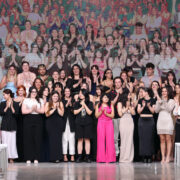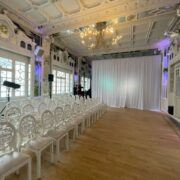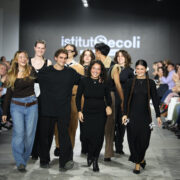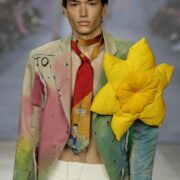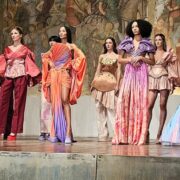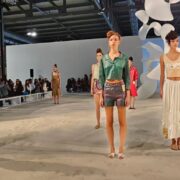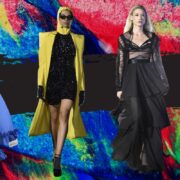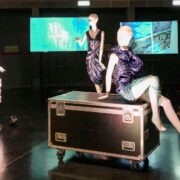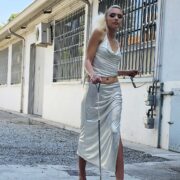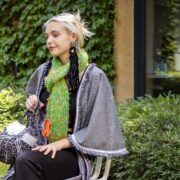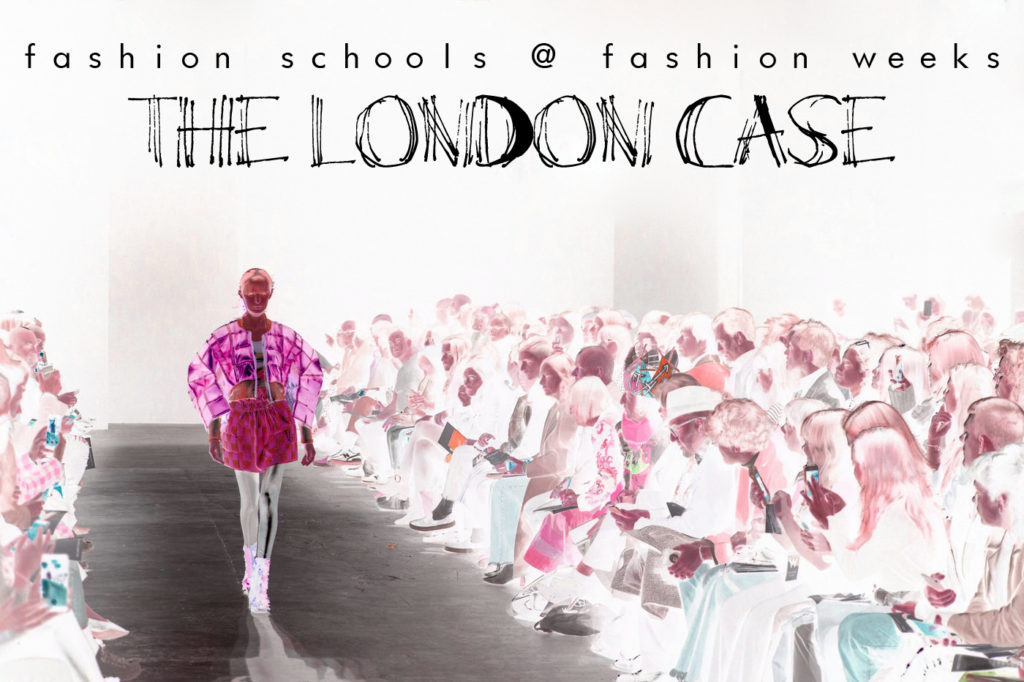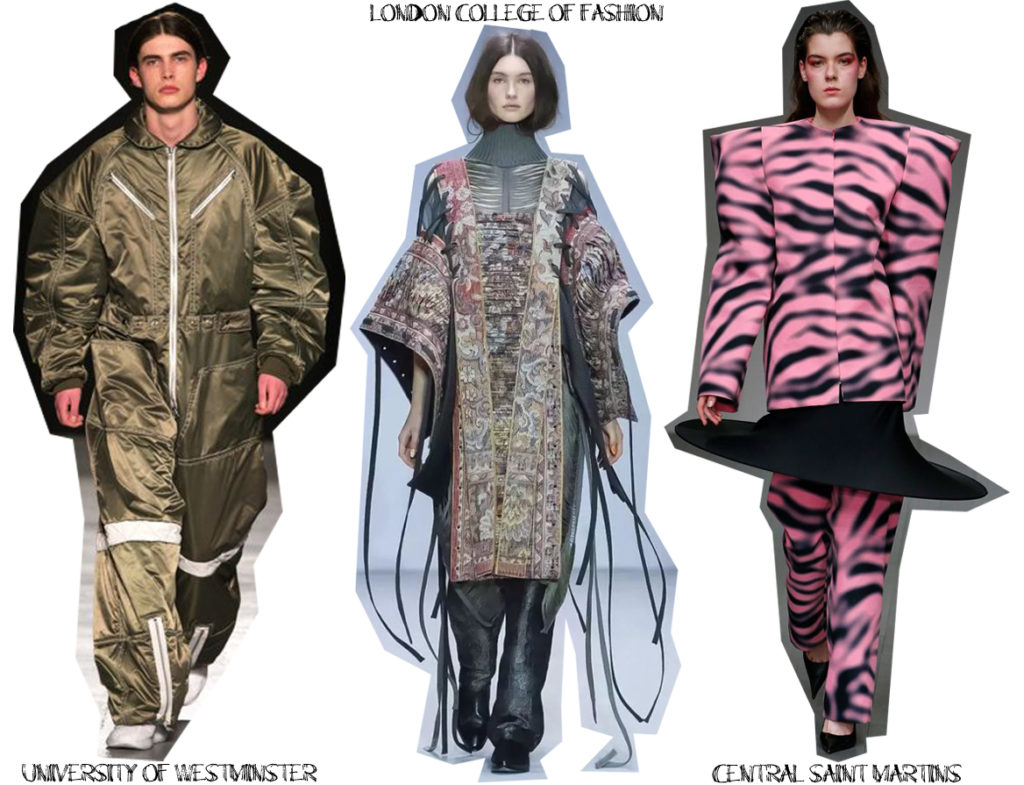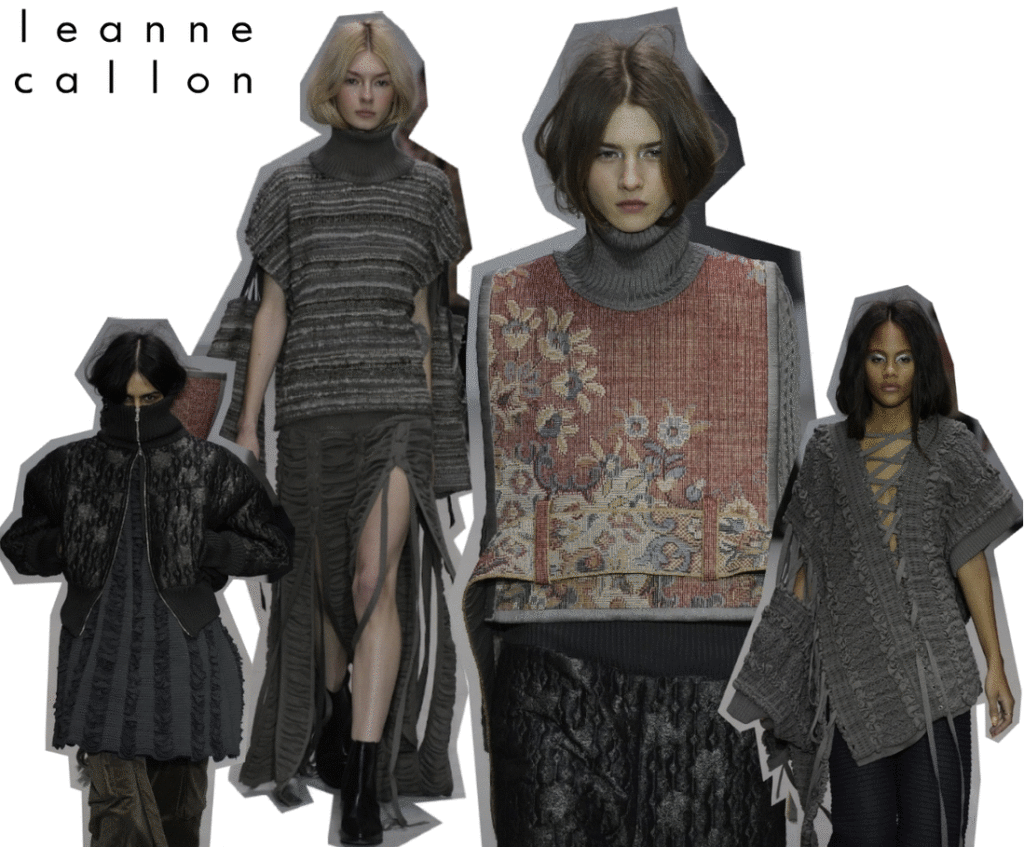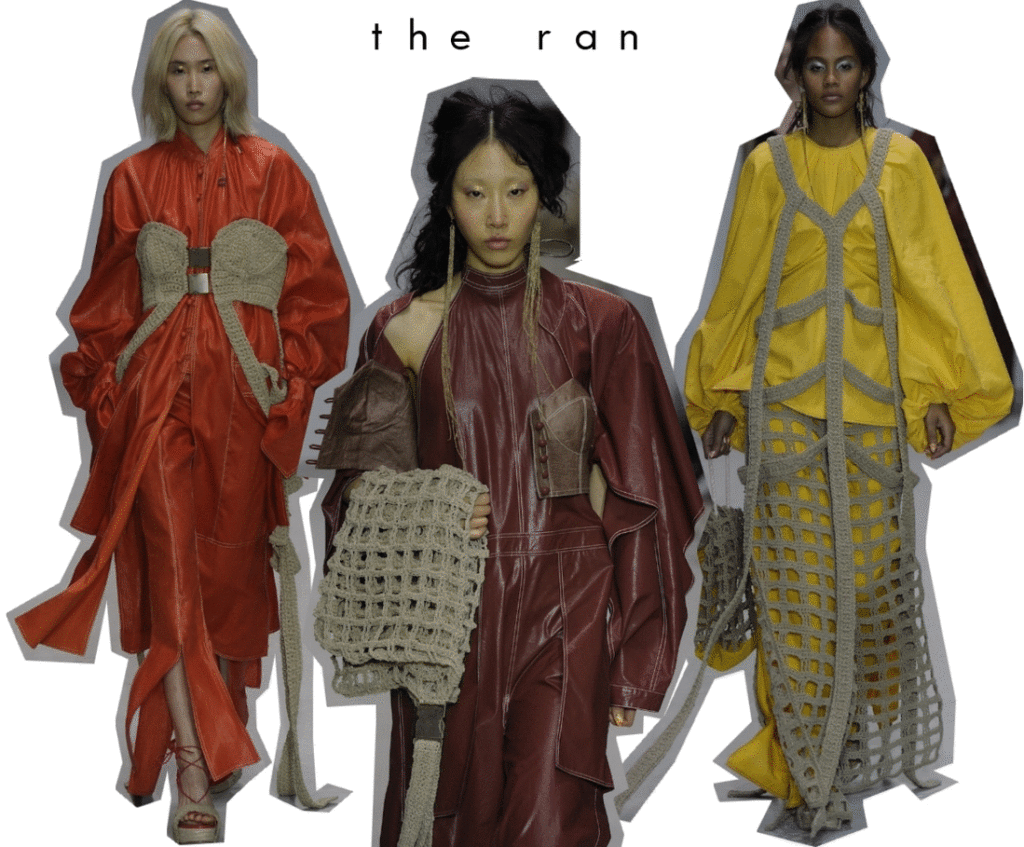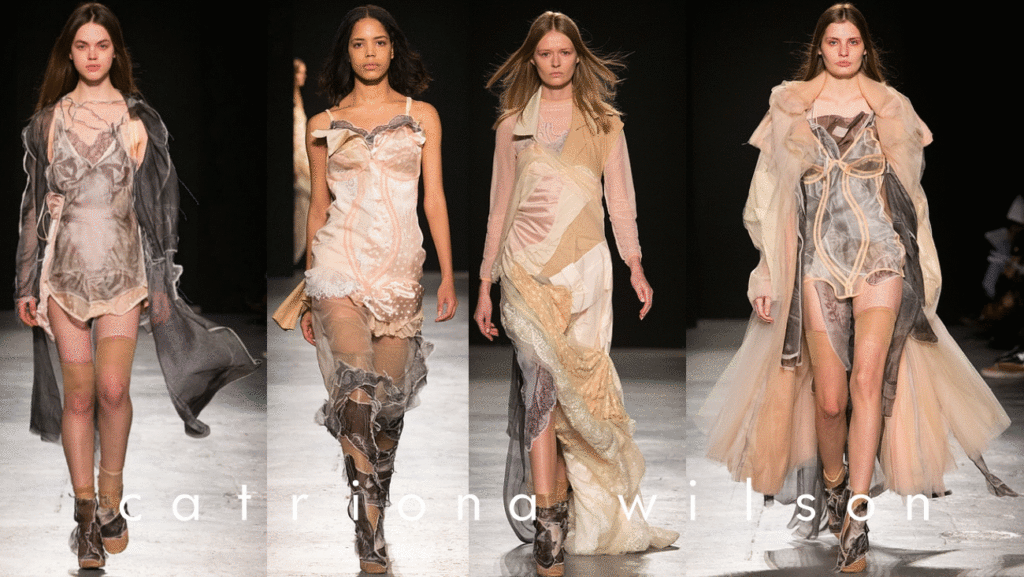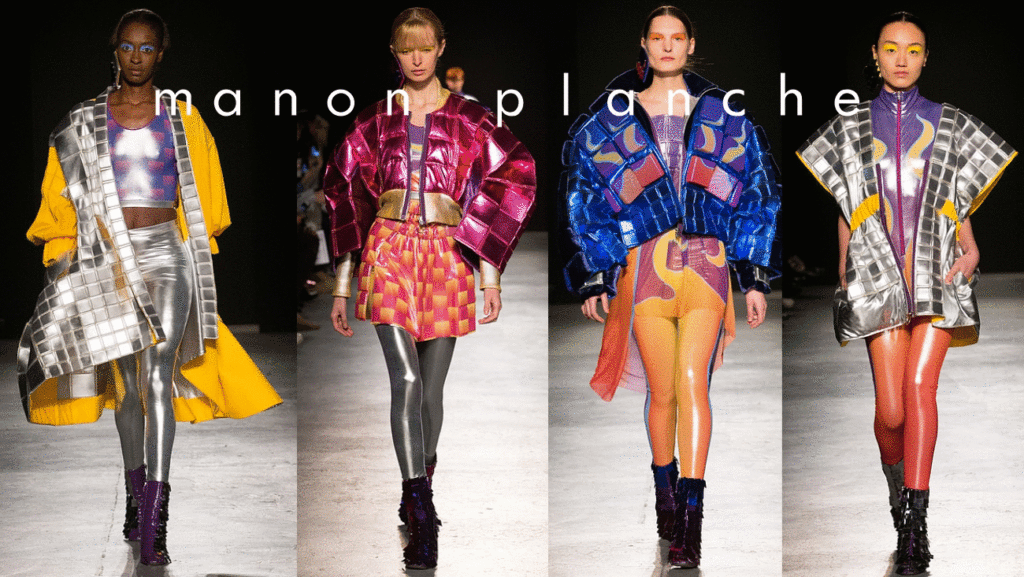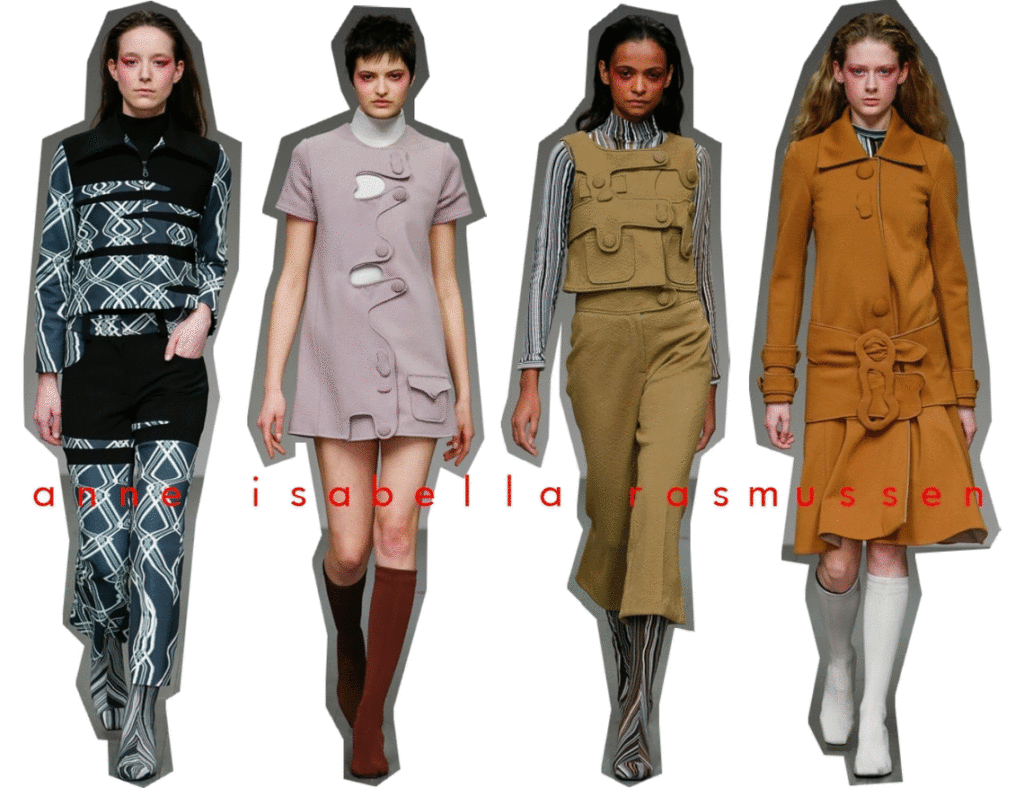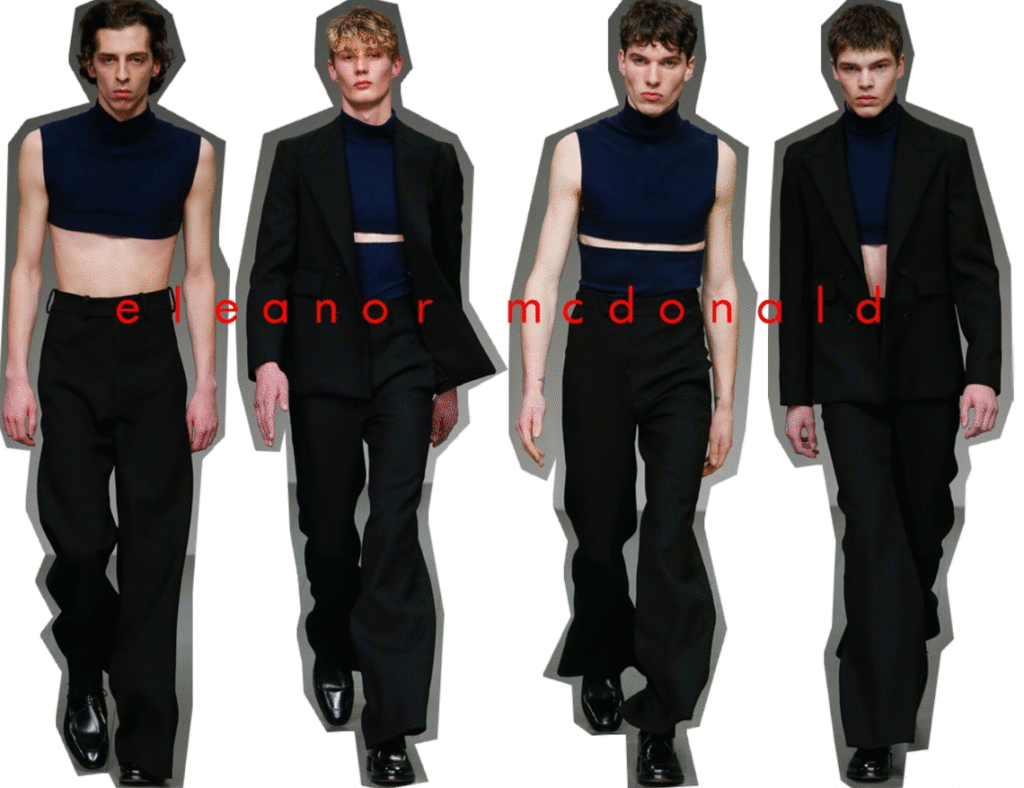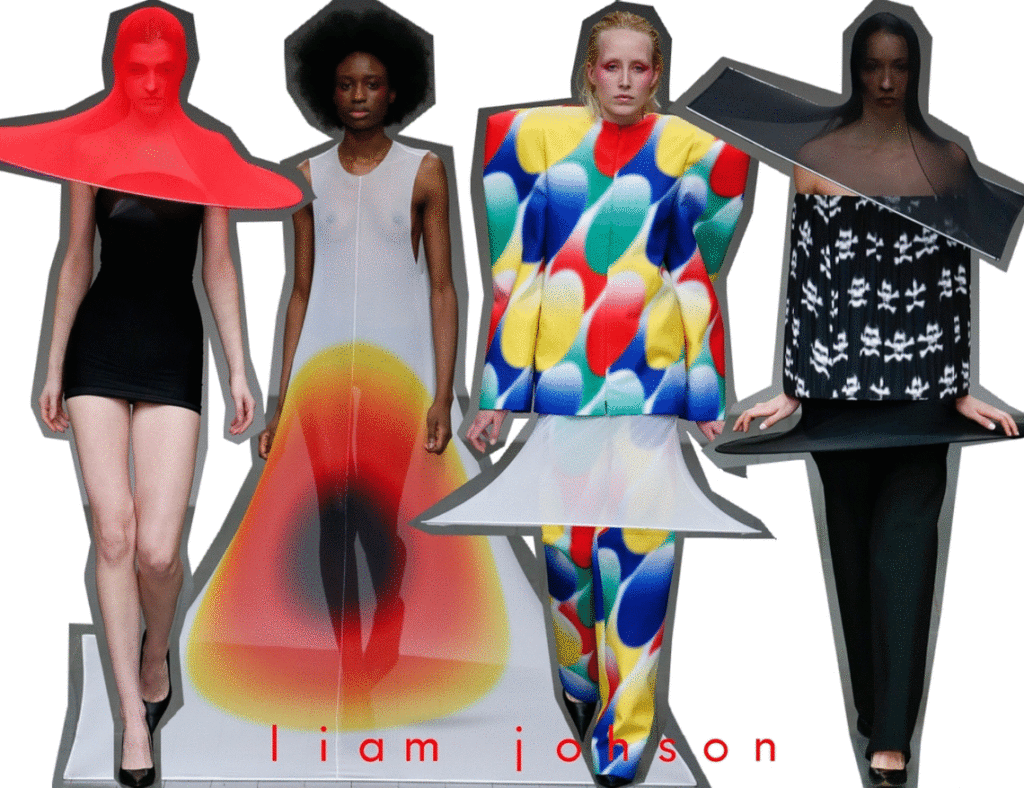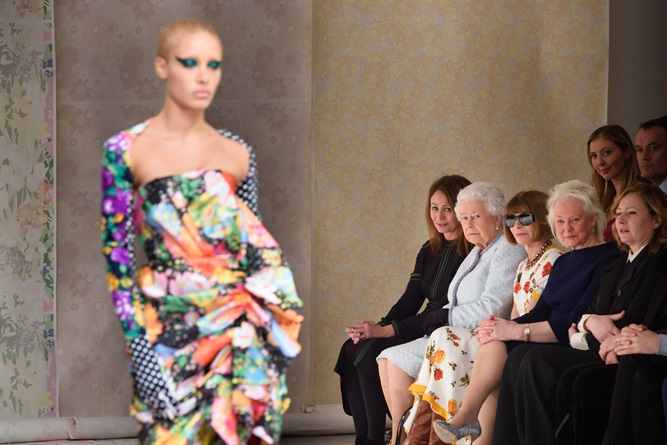 |
| Queen Elizabeth II and Anne Wintour at the fashion show of Richard Quinn (photo from Vanity Fair) |
eclectism, transformation and technology are the key-words to interpret
the future staged by London College of Fashion, University of Westminster and Central Saint Martins. All these schools have very different approaches to fashion education and the results seen on catwalk demonstrate another time how is important to maintain this divesity of ideas and proposals.
“I have long believed that fashion education needs to provide our students with the most realistic and industry-ready educational experience. By showing their collections in February than June, it enables our accomplished final year students to become truly part of the industry.” (Andrew Groves, BA Fashion Design Course Director at University of Westminster)
This would means make changes in the various course programs and a complete recalculation of lessons and timetables, but with incredible benefits in terms of prestige of the schools and immediate famefor students. Something is moving in this direction. We just have to wait for a paradigm shift and in the meanwhile you can take a look to the proposals of the three fashion schools showcased during the last London Fashion Week for the fall/winter 2018-19
 Structured following the schedules of London Fashion Weeks for menswear and womenswear, the London College of Fashion presented two MA degree stand-alone fashion shows, one on December 2017 and the last on February 2018. But this is not the end of the story.
Structured following the schedules of London Fashion Weeks for menswear and womenswear, the London College of Fashion presented two MA degree stand-alone fashion shows, one on December 2017 and the last on February 2018. But this is not the end of the story.
-
“Informal arrangements” by Leanne Callon, a designer specialized in knitwear, s focused on the productive process of garments and intrigued by the domestic environment through the close and unexpected relationship between second-hand rugs, drapery, knitwear and tapestry.
-
The Jaili Lu‘s final collection s inspired by the nove “Pride and Prejudice” and by the male and female clothing of the 19th century, revisited and mixed together through artisanal tailoring techniques to create a strong and modern idea of an androgynous and romantic woman.
-
Feiyi Shuai created a colorful collection entitled “Fun to wear”, inspired by the work of the fashion photofìgrqpher Mark Borthwick and based on the way people live creativity wearing clothes bought rummaging in second-hand stores or flea markets, mixing freelyprints, textures and shapes.
-
Vicky Kleung, from Hong Kong, redesigns a messy wardrobe in her collection “Ugly fashion”, creating outfits made to give the idea of different types of clothes hanged together and covered by protective plastic bags that favor the born of a new personal way to intend fashion aesthetic of each person.
-
The French designer Nina Galbè-Delord was inspired by abstract art for a collection that emphasized strenghts and weaknesses of femininity through the use of pure and strong colors, sculpured shapes and flashy handmade embroideries.
-
“Romantic Boho: The Moment of Naturalness” is the collection by the South Korean designer Ran Seo with her brand “The Ran”. With raw materials, like hemp cord, she wants to represent a new modernism applied to natural fibers and fabrics through a conceptual use of crochet technique that creates a sophisticated natural mood.
-
The Chinese Rong Xia presented a collection that represents a match of different cultures, starting from the Japanese Wabi-Sabi aesthetic to the Chinese Zen culture to the more western idea of perfectionism in tailoring and beauty.
-
“Femme fatale” by the Russian designer Dmitry Gotsfrid is inspired by the golden age of French and English couture in the 1940s and 50s, reimagining the work of great masters of the past like Dior or Balenciaga through the attentive study of cloth’s construction.
-
Juneyen Chen, from Taiwan, explored the gender neutrality through the balance between masculinity and femininity and the mix of male heavy fabrics and the lightness of more female silks and transparent fabrics.
-
The Japanese Eren Hayashi presented the collection “Warp”, an interesting conceptual trip in the fourth dimension and the twisted space through holographic anfìd plastic materials optically distorting mixed with interwined fabrics and furs in contrasting colors.
After a complete reconstruction of the BA Fashion Design course to allign with the Fashion Week schedule and the new needs of fashion industry even more attracted by new talents and always looking for new blood to replenish its creative sectors, also the University of Westminster was at London Fashion Week.
- The Catriona Wilson‘s collection is a deep and emotional reflection about the grief for a lost person and the psychological conseguences of this absence explained through therecreation of something new distorting and assembling pieces taken from her mother’s wardrobe.
- Like a dystopian world a the end of the days, the collection by Dillan Chipchase is inspired by the work of William Burroughs “Wild boy” and by the performing art group “Mutoid Waste Company”, reflected in male outfits which assembled parts of classic items and traditional fabrics in a mess of color and prints.
- The menswear collection by Holly Priestley is influenced by the strong social changes of Norther English young men in the turbulent years between the late 70s and the early 80s, translated into colorful prints inspired by furnitures, tapestries and wallpapers typical of those years.
- The collection of Joshua Crabtree is inspired by the Arrte Povera movement interpreted with a dark color palette, juxtaposition and layers of taffeta, nylon, rubberised and waterprooffabrics with an industrial and apparently poor aspect.
- Revisiting the gorgeous look of the it-girls of the beginning of this millennium, Lauren Audrey created a hyper-glamorous collection with a vibrant color palette, rich furs, patchworks of leathers and sparkling textures.
- Funny and futurible, the 6 outfits proposed by Manon Planche are inspired by the world of drag racing cars,with bright colors, bold prints, metallic surfaces and geometric oversize shapes that recall mechanical parts of cars.
-
The men proposed by Megan Williams are coming from the space with their oversize overalls, giant bomber jackets and metallic fabrics. In fact the collection is inspired by the book “Spacesuits: the Smithsonian National Air and Space Museum”.
-
“The boy you stole” is the title of the cutting-edge and surprising collection by Paolo Carzana. A sort of personal manifesto to protest against any abuse of power visually translated with the use of external extensions that change the normal shape of the male body and the traditional workwear or military suits.
-
A dystopian but colorful vision of the future was proposed by Savanah Avery with her collection entitled “Motherwomb”, which mixes echoes from the past withmessy fringed textures and big volumes to recreate the idea of a desertic earth.
-
The particular shapes created by the designer Suzy Lee are a conceptual and modern revisiting of the traditional clothes of the last South Korean Haenyeo divers on the Jeju Island, transformed into oversize outfits with bright color-blocks and stylized prints.
-
The theatrical collection designed by William Dill-Russell is a reflection about masculinity, femininity and pre-established sexual genders through historical clothing that are completely reconstructed mixing periods, colors and aspects transforming classy male and female shapes for a unique genderless and gorgeous style.
-
Anne Isabella Rasmussen started her design process playing with vintage images of 60s-70s garments through a scanner, creating glitch effects on prints, moving shapes and focusing on details, buttons and buckles in particular.
-
Inspired by the gay culture and the Parisian night-life of the late 70s and early 80s, the menswear collection by Archie Alled Martinez is based on a sensual but elegant way to use knitwear redesigning the most classic tailored pieces of male wardrobe.
-
With a 60s-70s mood inspired by the Italian student revolution, the womenswear collection by the designer Camilla Mecacci is apparently simple in shapes, but reveals particular and choices about materials, like the the rubber that replaces leather maintaing the same luxury effect.
-
Daniel Martin Crabtree was nspired by the 80s British artist Christopher Nemeth and by his strange relationship with fashion. Thrugh casuality and the use of upcycled garments the designer revitalized men’s clothing with a careful focalisation on details and handcrafted techniques.
-
Starting from a personal reflection about the meaning of masculinity and its pre-determined shapes, Dohan Jung transformed the classic texture of linen through traditional Korean techniques like startching and moulding to create 3-D distorted surfaces.
-
Edwin Mohney closed the CSM’s show with really special effects. Provocative, extemporary, sculptoral and deliberately without a clear inspiration or a guiding principle, the collection made of inflatable pieces (like the wearable swimming-pool) or iconic stiletto shoes with the mask of Donald Trump (the already famous Trumpetto-heels), was probably the most photographed and appreciated for its bitter irony.
-
Taking inspiration by old photos and vintage garments seen in the Londinian flea markets, Eleanor McDonald created a menswear collection based based on cuts and proportions focused on the tactile perception of garments on the skin, decoded into soft and comfy clothes with precious linings.
-
Handcrafted techniques taken by vintage magazinesare the basis of the soft feminine Elise Perrotta‘s collection. The designer personally realized hand-knitting and felt fabrics creating experimental materials and a sensitive aesthetic.
-
Inspired by the strong personalities of the women of his family, Ernesto Naranjo created sculptoral garments collecting objects from his grandmother’s house and assembling them in an over-decorated, theatrical and ironic collection which shows hanging plates, long fringes as giant brooches and bright colors.
-
Joan Ros Garrofe made a serious and concrete reflection about the empowerment of working class analysing the work of a great master of couture, Cristobal Balenciaga, who is his reference point for proportions and construction of his functional male garments.
-
The Joshua Kim‘s collection is a game of contrasts between American sportswear, a sparkling Hollywoodian glamour and Haute Couture constructions. Exaggerated proportions of shoulders and draped shapes are realized using traditional tailoring techniques and methods, but infusing a deep modernity to the entire collection.
-
The collection of the twins Laura and Deanna Fanning is the perfect result of the collaboration and union of the different skills of the two designers, one specialized in womenswear and one in knitwear design. The rounded and unusual shapes, underlined by contrasting colors which outline different parts, are inspired by a mix of 60s space-age films, armours and protective sportswear.
-
The incredible collection designed by Liam Johnson is the transformation of bidimensional digital printed surfaces into geometric three-dimensional volumes based on elementary shapes like triangles, squares and circles. Freely creative, surprising and more close to wearable art than to effective clothing, this collection is incredibly realized using only poor and cheap fabrics turned into luxury special effects.
-
Uniformity and differentiation are the two keywords to understand the collection of Moon Hussain. Workwear and uniforms are translated into single-pattern pieces that change their aspects and final results breaking homogeniety and homologation thanks to the work on textures and fabrics.
-
Inspired by the 80s-90s cult magazine “Propaganda” and the gothic culture and aesthetic revisitng also the Victorian mourning clothing, Nicholas Eric Palmer created his menswear collection working on vintage garments and jewelry mixed with a dark, obscure mood.
-
Winner of the “L’Oreal Professionel Creative Awards 2018”, Olaf Tavares Vieira explains his menswear collection in terms of relaxation and utilitarism, with clothes that softly leans on the body through draping, dropped shoulders and destructured shapes.
-
Bizarre, exaggerated although possessing a certaing lightness, the womenswear collection by Paula Canovas Del Vas is inspired by the works of two artists, Paul Lee and Ouka Leele, and in particular by their use of colors in function of shapes. The enormous shoulders, draped of embossed with felt flowers, that are opposed to skinny pvc leggings or the game of neon colors with basic tones contribute to empower the female silhouette.
-
Rebecca Jeffs won the other “L’Oreal Professionel Creative Awards 2018” with a womenswear collection fluid, hectic and clinking, realized with a sort of macramè technique to produce fishnets that harnessreal seashells, garments and female bodies.
-
Intimate and suffused wth a bit of modern romanticism and nostalgia for the unknown, the female collection of Yuhan Wang uses the metaphore of the curtain, translated into softly draped and shiny fabrics or delicate floral patterns, to explain the subtle distance between us and our neighbours, public and private, curiosity and solitude.
